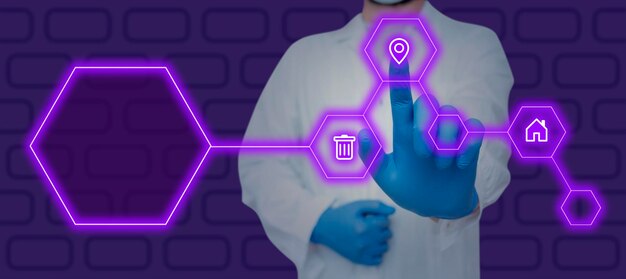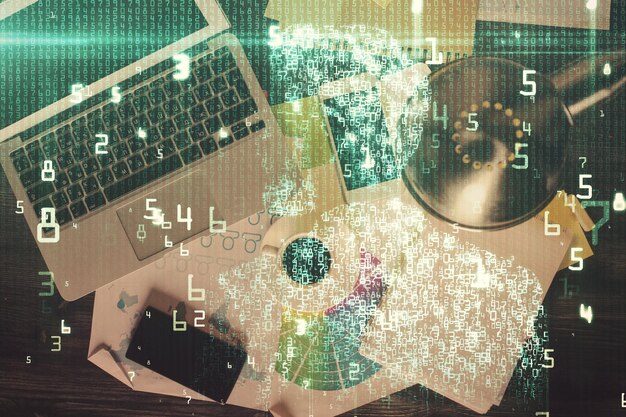Understanding the Basics of Clinical Laboratory Improvement Amendments (CLIA) and Its Importance in Healthcare
Clinical Laboratory Improvement Amendments (CLIA) is a set of regulations enacted by the U.S. Congress in 1988 with the primary goal of improving the quality, validity, and reliability of laboratory tests used in healthcare. CLIA applies to all laboratories, whether large hospital-based or small, independent facilities. The regulations are administered by the Centers for Medicare & Medicaid Services (CMS) and require laboratories to meet certain requirements to ensure that they are performing tests effectively and accurately.
Requirements for CLIA-Certified Laboratories
Laboratories that are CLIA-certified must meet stringent requirements, such as having qualified personnel, appropriate equipment, proper record keeping and reporting systems, and a quality control program. They must also adhere to standardized procedures for testing to minimize errors and ensure consistency in results.
Qualified Personnel
CLIA requires laboratories to employ competent personnel, including medical laboratory technologists and scientists, who are certified or registered by an accredited professional organization. This ensures that those performing tests have the necessary education, training, and experience to do so accurately and effectively.
Appropriate Equipment
CLIA requires laboratories to use equipment that is appropriate for the tests being performed and has been approved by the Food and Drug Administration (FDA). This helps ensure that tests are being conducted using reliable, accurate, and safe equipment.
Proper Record Keeping
CLIA also mandates that laboratories maintain detailed records, including patient information, test orders, results, and quality control data. Proper record keeping ensures that patient care is optimized, while also providing accountability and compliance with regulatory requirements.
Quality Control Program
A crucial aspect of CLIA regulations is the requirement for laboratories to implement a quality control program, which includes routine proficiency testing and internal quality assessment. This helps ensure that laboratories remain proficient in their test performance and maintain consistent results over time.
Importance of CLIA in Healthcare
The importance of CLIA in healthcare cannot be overstated, as it provides patients with confidence that the laboratory tests they receive are accurate and reliable. By ensuring laboratories meet stringent requirements, CLIA helps protect public health and ensures that healthcare providers have access to the information they need to make informed decisions regarding their patients’ care.

Understanding the Clinical Laboratory Improvement Amendments (CLIA): A Crucial Aspect of Modern Healthcare
The Clinical Laboratory Improvement Amendments (CLIA), enacted in 1988 with amendments in 1992 and 1997, is a set of regulations that establishes quality standards for clinical laboratories in the United States. CLIA was initially implemented under the auspices of the Centers for Medicare and Medicaid Services (CMS), formerly known as the Health Care Financing Administration (HCFA), to ensure the accuracy, reliability, and timeliness of diagnostic laboratory results.
Defining CLIA:
CLIA outlines the necessary requirements that clinical laboratories must adhere to for certification, accreditation, and inspection. These regulations apply to all types of laboratories that perform tests on human specimens, including those found in hospitals, reference laboratories, and physician offices. By setting forth mandatory requirements for laboratory personnel training, equipment calibration, quality control procedures, and record keeping, CLIA aims to minimize the risk of erroneous test results, thus ensuring the safety and efficacy of diagnostic testing.
CLIA’s Historical Background:
Prior to CLIA, there were no federal regulations governing clinical laboratories. In response to numerous instances of inaccurate and misleading laboratory results, which led to improper diagnosis and treatment, CLIA was passed into law. The first round of regulations went into effect on July 6, 1992, and laboratories were given three years to comply with the new standards. Subsequent amendments in 1997 further strengthened CLIA requirements, with enforcement beginning in 1998.
The Crucial Role of CLIA in Today’s Healthcare Landscape:
Given the increasing complexity and interconnectedness of modern healthcare, it is essential to recognize the importance of CLIA in ensuring the integrity of clinical laboratory testing. With laboratories processing millions of tests each year, CLIA regulations provide critical oversight to promote patient safety and improve diagnostic accuracy. As healthcare advances with innovative technologies and expanding laboratory services, the role of CLIA remains indispensable in upholding the highest standards for clinical laboratories.

Regulatory Background
Overview of the Centers for Medicare & Medicaid Services (CMS)
CMS, or the Centers for Medicare & Medicaid Services, is a crucial federal agency responsible for administering the Medicare, Medicaid, and Children’s Health Insurance Program (CHIP) in the United States. Established in 2001 through the reorganization of various health programs under the U.S. Department of Health and Human Services (HHS), CMS sets and enforces guidelines for healthcare providers and suppliers to ensure they maintain a specific standard of quality in their services.
Federal Regulatory Framework for Clinical Laboratories
Clinical Laboratory Improvement Act (CLIA ’88)
The Clinical Laboratory Improvement Act (CLIA) of 1988 was a federal law enacted to regulate and standardize clinical laboratories in the U.S., with the primary objective of protecting public health by establishing requirements for their quality, competence, and operational efficiency. CLIA ’88 was initially administered by the Food and Drug Administration (FDA), but later transferred to CMS in 1992.
a. Establishment of CLIA and its objectives
The Act set forth specific requirements for laboratories to meet, including personnel qualifications, equipment calibration, quality control procedures, and record-keeping. Its primary objectives were to:
– Ensure the accuracy, reliability, and timeliness of laboratory test results.
– Establish a uniform set of standards for all clinical laboratories in the U.S., regardless of size or location.
– Minimize errors and false results that could lead to misdiagnosis, unnecessary treatment, or incorrect billing.
b. Scope and applicability
CLIA ’88 applied to all clinical laboratories in the U.S. that performed tests on human specimens for diagnosis, prevention, or treatment of diseases and conditions, regardless of whether they were accredited or not. This included laboratories operating in hospitals, outpatient facilities, and independent settings.
Clinical Laboratory Improvement Amendments (CLIA ’92)
a. Revisions to CLIA ’88 and their impact
The Clinical Laboratory Improvement Amendments (CLIA ’92) were enacted in response to concerns about the lack of enforcement and oversight under CLIA ’88. The amendments gave CMS greater authority to develop and enforce laboratory standards, establish penalties for non-compliance, and create a national accreditation program. These changes led to increased scrutiny of laboratories, with a focus on continuous improvement and quality assurance.
Current Good Laboratory Practice (cGLP) regulations for high complexity laboratories
a. Overview of the regulations
The cGLP regulations, also known as Title 21 Code of Federal Regulations (CFR) Part 58, apply to high complexity laboratories that perform tests primarily for research and development purposes. These regulations build upon CLIA standards by requiring more rigorous documentation, validation of methods, and quality assurance procedures to ensure the validity of results.
b. Requirements and compliance
The cGLP regulations cover aspects such as:
– Personnel qualifications and training
– Facility design, construction, and maintenance
– Equipment validation and calibration
– Quality control programs
– Record keeping and documentation
Laboratories must demonstrate compliance with these regulations through periodic inspections by regulatory agencies, such as the FDA or CMS. Failure to meet cGLP requirements can result in fines, corrective action requests, and potential loss of certification.

I CLIA Certification Process
Eligibility for CLIA Certification
To become eligible for CLIA certification, laboratories must comply with specific requirements set forth by the CMS. Laboratories that perform tests on human specimens for their own patients are subject to CLIA certification regulations, with certain exceptions.
Steps Involved in Obtaining a CLIA Certificate
- Pre-inspection preparation:
Development of Quality Assurance program:
Laboratories must establish and document a comprehensive quality assurance (QA) program to ensure the accuracy, reliability, and timeliness of their test results.
Procurement and maintenance of necessary equipment:
All laboratory equipment must be appropriate for the tests performed and maintained according to manufacturer instructions and regulatory requirements.
On-site Inspection
Inspection process and documentation requirements:
During the on-site inspection, CLIA surveyors evaluate the laboratory’s adherence to regulatory requirements, including QA documentation and corrective action processes.
Possible outcomes and corrective actions:
Following the inspection, laboratories may receive a deficiency report detailing areas where improvements are needed. Corrective actions must be taken and documented to address any identified issues before certification can be granted or reinstated.
Continuous Monitoring and Renewal of CLIA Certification
- Annual reporting and quality assurance program evaluation:
- Re-inspection process:
Laboratories must submit an annual report to CMS detailing their QA program activities and any corrective actions taken throughout the year.
CLIA certification is not a one-time event; laboratories must undergo periodic re-inspections to maintain their certification. Re-inspections are scheduled based on the laboratory’s risk category and typically occur every two years for lower-risk laboratories and annually for higher-risk facilities.

Consequences of CLIA Noncompliance
Potential penalties for noncompliance
Noncompliance with the Clinical Laboratory Improvement Amendments (CLIA) regulations can result in severe consequences for laboratories. The Centers for Medicare & Medicaid Services (CMS), which enforces CLIA, can impose various penalties on noncompliant laboratories. These penalties include:
- Civil Monetary Penalties (CMPs): CMS can levy fines of up to $10,000 per violation for noncompliance.
- Denial or Suspension of Payment: CMS can deny payment for services rendered during the noncompliance period.
- Revocation or Suspension of Certificate: CMS can revoke a laboratory’s CLIA certificate, effectively closing the lab.
Case studies of laboratory closure or sanctions due to CLIA violations
Several high-profile cases have highlighted the consequences of CLIA noncompliance. For instance, the link that produced adulterated drugs, leading to the death of several patients, was closed permanently due to CLIA violations. Another laboratory in link faced a massive recall and sanctions after it was found to have contaminated drugs, resulting in numerous illnesses.
Implications for patient safety and public health
Noncompliance with CLIA regulations can compromise patient safety and public health in numerous ways. Inaccurate test results or contaminated specimens can lead to misdiagnosis, incorrect treatment, or delayed diagnosis. Furthermore, noncompliant laboratories may use unsterile equipment, improper test methods, or unqualified personnel, increasing the risk of infection transmission. Ultimately, CLIA regulations exist to ensure that laboratories maintain the highest standards of quality and safety, thereby protecting patients and the public from potential harm.

Conclusion
In the complex and ever-evolving field of clinical laboratories, adhering to strict regulations is crucial for ensuring lab quality and maintaining patient safety. One such regulation that holds significant importance in this regard is the Clinical Laboratory Improvement Amendments (CLIA) of 1988. CLIA sets essential standards for laboratory testing and quality control to protect public health and ensure the accuracy, reliability, and timeliness of diagnostic and therapeutic lab results.
Summary of CLIA’s Importance
CLIA certification is a mandatory requirement for all clinical laboratories in the US, and its implementation has led to substantial improvements in laboratory performance and patient care. With rigorous inspections, stringent quality control measures, and mandatory continuing education for lab personnel, CLIA serves as a powerful catalyst for promoting excellence in laboratory operations.
Call to Action: Prioritize CLIA Compliance
Given the critical role of clinical laboratories in providing accurate and timely diagnostic information, it is imperative for laboratories to prioritize CLIA compliance. Non-compliance with CLIA regulations can lead to serious consequences, including fines, penalties, and even legal action. Moreover, noncompliance can potentially compromise patient safety and put healthcare providers at risk of reputational damage.
Continued Education: Stay Informed on CLIA Regulations
Staying updated with the latest CLIA regulations and requirements is essential for clinical laboratories to maintain their certification and uphold their commitment to quality patient care. The Centers for Medicare & Medicaid Services (CMS), which oversees CLIA, frequently updates the regulations to reflect advancements in technology and laboratory practices. Regularly attending workshops, webinars, or seminars on CLIA compliance can help laboratories stay informed and ensure they are prepared to meet evolving regulatory demands.
Final Thoughts: Advancing Healthcare with Effective Regulations
Effective laboratory regulations, such as CLIA, play a vital role in advancing healthcare by promoting quality, transparency, and accountability in clinical laboratories. By focusing on lab quality and patient safety, we can build a culture of continuous improvement and innovation within the healthcare industry. In summary, prioritizing CLIA compliance is not just an obligation for clinical laboratories; it’s an investment in patient safety, public health, and the overall growth of the healthcare sector.







